There is a magical place far far away where Orange wine comes in red, white and pink. Where is this nirvana that makes Orange wine that is not orange? What makes it so magical and why do we not know more about it?
Just over a year ago I decided to put my feet where my heart wanted to be and find a base in Australia. But in order to find this base, I put a brief together (love an advertising brief, me) and came up with four must-haves:
- As a Sydney girl, even though the city’s house market is off limits for me pricewise, I had to be within easy driving distance of my hometown
- Being a wine girl, it must be a wine region
- Heat, humidity and I don’t mix, so it had to be cool(ish)
- I’m a foodie, so access to great chefs and restaurants was non-negotiable
So, with New South Wales as my playing field - I cast my must-haves into the search engine net and a few places popped up.
No surprise, first off the mark was the Hunter Valley – sorry, not for me, it’s too hot, too humid and as much as I love the wines, it’s a bit commercial and there’s no real central hub; second came the Southern Highlands - hmmm, it’s expensive and possibly a bit small with only 15 or so cellar doors; and then a final contender - Orange.
Orange? I’d never heard of it and yet it ticked every single must-have:
- 3 ½ hours’ drive west of Sydney, further on from the Blue Mountains and higher still
- Home to the highest vineyards in Australia, and with over 80 producers this is a serious wine region
- Famous for its four distinct seasons, with snow in winter and temperatures that rarely go over 32C in summer
- As the unofficial restaurant capital of NSW, outside of Sydney, its array of fine dining, casual restaurants and wine bars have top chefs clamouring to work there, attracted by its discerning locals and one million hungry visitors each year
- Best of all it’s big enough to offer everything a city girl needs, whilst being small enough to feel like a community.
After a quick visit - where I was astounded that this gem of a town hadn’t won every ribbon for its beautiful gardens and architecture, not the least for being confidently cool sitting in the shadow of a volcano encircled by rolling vineyards – I made an even quicker exchange on a little cottage. My roots were firmly planted in a wine region called Orange.
Orange is part of Australia’s cool-climate cohort alongside Tasmania, Yarra Valley, Mornington Peninsula, Adelaide Hills, Beechworth, Grampians, the Macedon Ranges and Canberra – each climate change-proofed and producing on-trend, complex, elegant, lower alcohol wines, combining low intervention with minimal oak use – Orange has an additional trick up its wine sleeve with its volcanic soils. Vines here are grown from 600m up to 1,300m above sea level on the slopes of Mt Canobolas, a volcano known as Gaahna Bulla on the land of the Wiradjuri people.
In terms of varietals grown, there are nuances to the Orange story, some subtle, others well, more Aussie. You’ll find Shiraz here of course, lighter and in my humble opinion, more complex than a Barossa version, there’s also zesty Chardonnays, electric Rieslings, juicy Sav Blancs, along with Viognier, Cabernet Sauvignon, Gewurztraminer and the best Pinot Gris’ I have ever tasted. Go down a few hundred feet in altitude and Italian and Spanish varietals make an appearance, notably Barbera, Nebbiolo, Sangiovese and Tempranillo.
Production is mainly small batch, so not a lot is exported but fingers crossed the UK and Europe will start to see more of Orange’s super stylish wines in the future – the UK is after all Australia’s largest export market, but that is by volume rather than value, and like the UK, making fine cool climate wine is not cheap.
So, at the start of the year, with a base in Orange, I visited over harvest. With vineyards climbing up the mountain, harvest here stretches from February through to April, delayed by approximately one week per 100m rise in elevation.
Having reached out to a few producers I was ready, my first crack at the harvest whip was picking – OK, I’m usually behind a desk not a tractor wheel, but I arrived booted to pick Pinot Gris at Brangayne, run by the talented David Hoskins, who happens to be a long lost cousin, but that is another story, (and no, Aussies aren’t all related to each other).
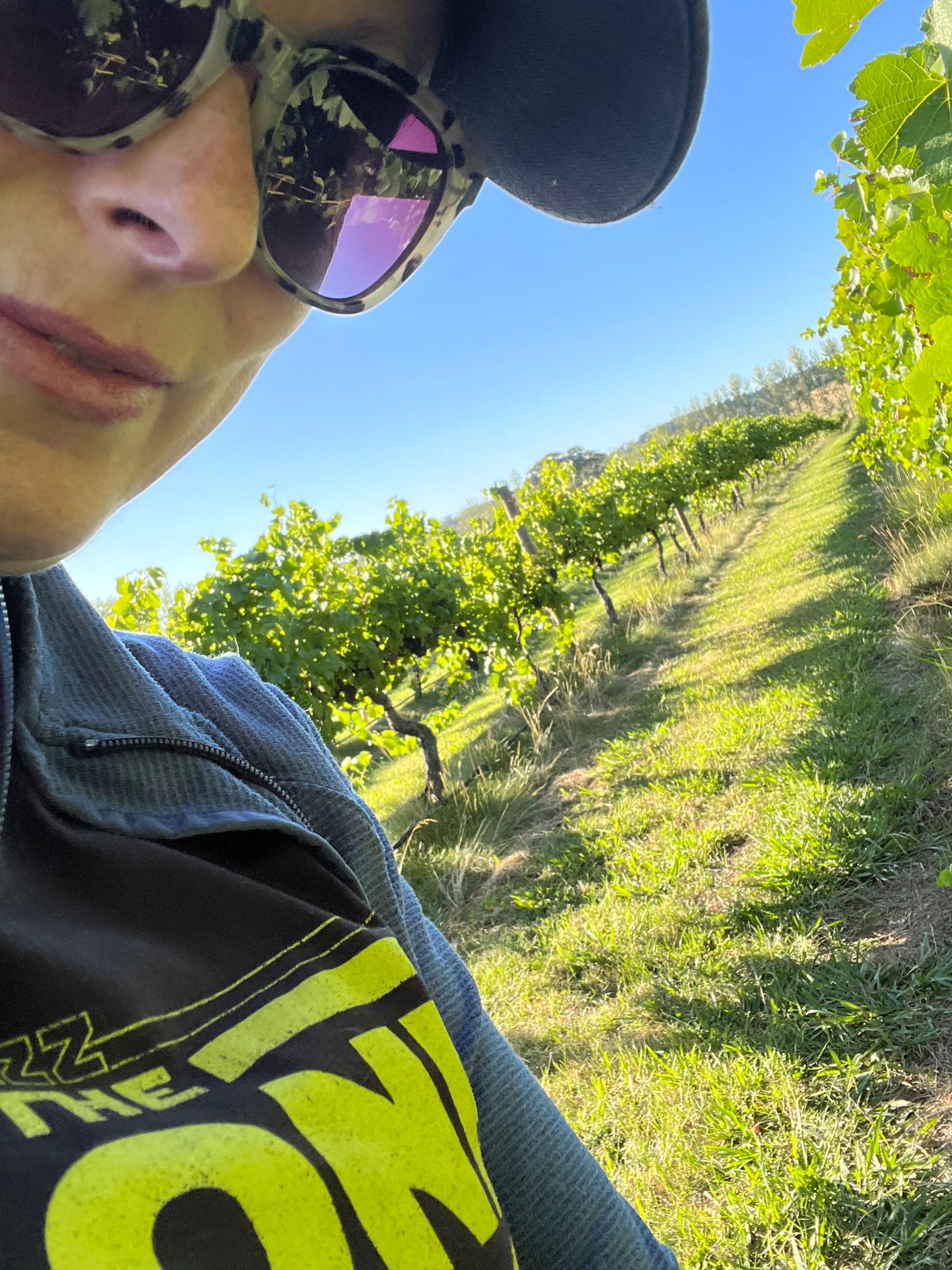 |
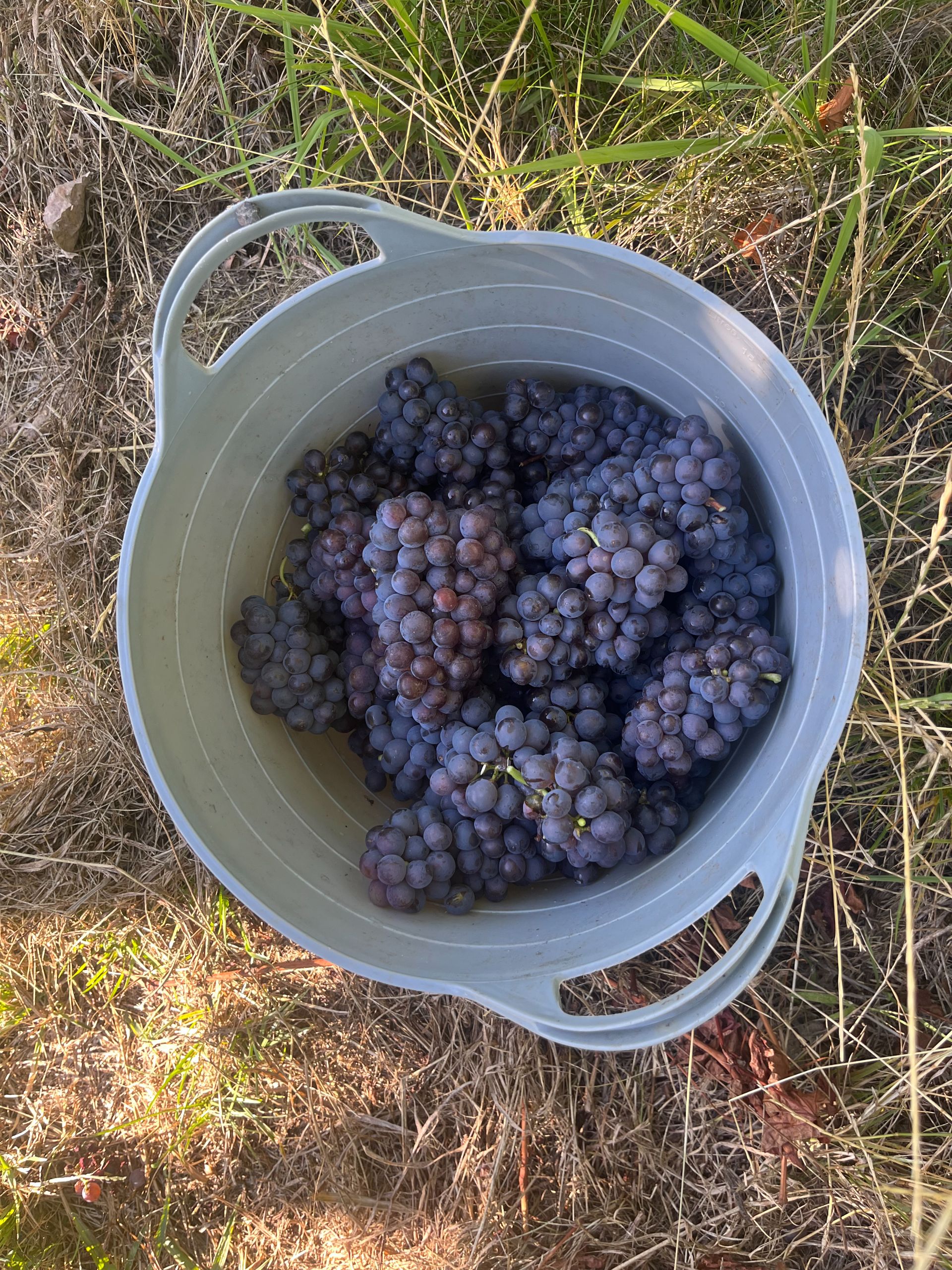 |
My only previous experience at picking was in the quaint hills of Sussex, where paired-back vines and low yields makes it all well, very charmingly English. Things are different in Australia. Not for the faint-hearted, the jungle-like vines cocooning the fruit required steely perseverance to eventually find what revealed themselves as huge watermelon-sized clusters of grapes. Combine the tangled vines, the zero-ozone sunshine at altitude, kookaburras cackling at our sunburnt arms and a pep talk about steering clear of snakes and spiders, and you’ve earned your stripes as a tough-as-nails harvest hand in just a few hours here.
The next day, (with David and I agreeing I was more of a suited-rather-than-booted type of gal), I had a meeting at Printhie – known for their award-winning sparkling wines and fine stills. Family-run, I sat down with the warm, welcoming Ed and Emily Swift to chat about a cellar door position, and returning the next day, I was handed a Printhie shirt and a shift.
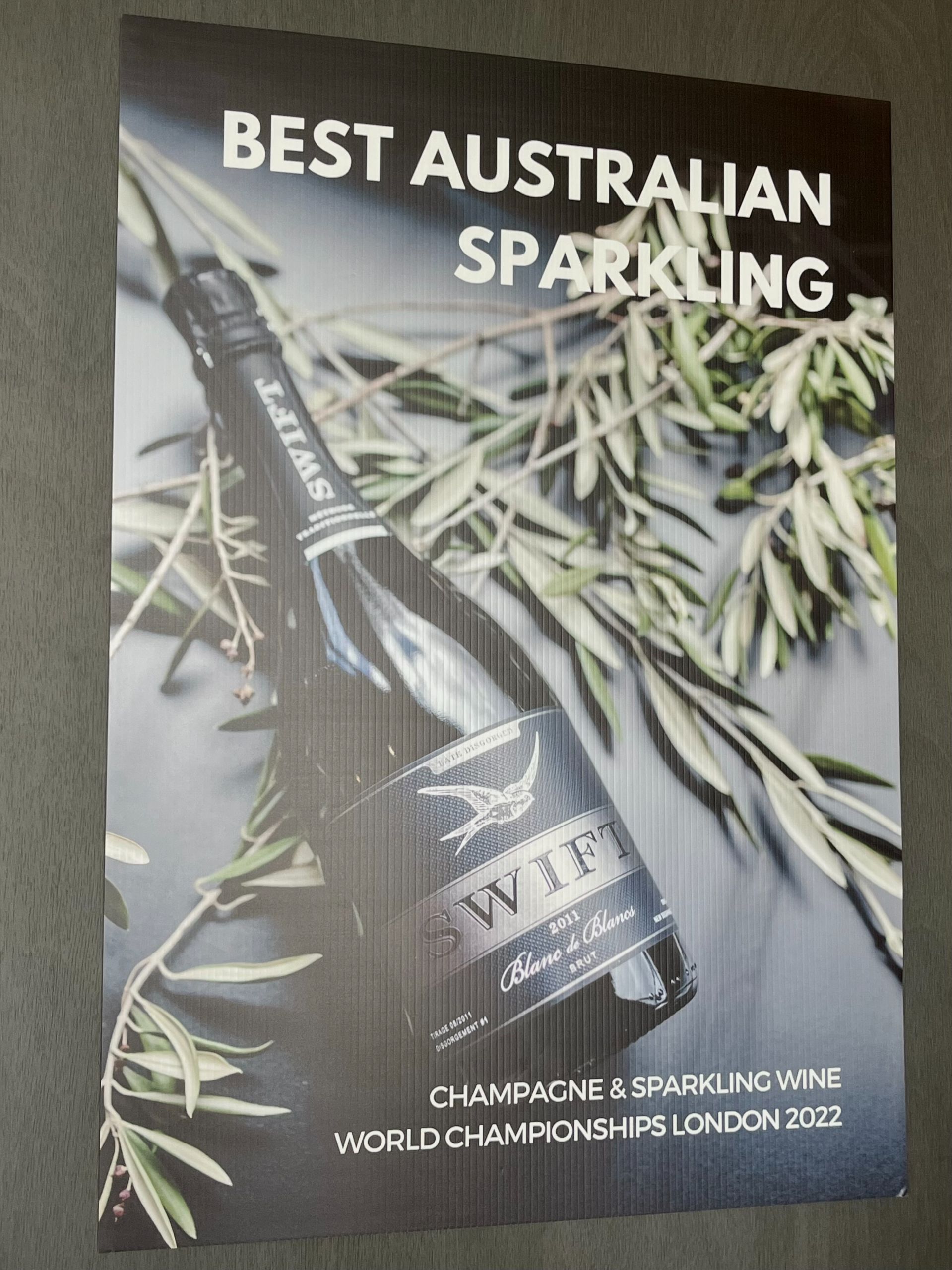 |
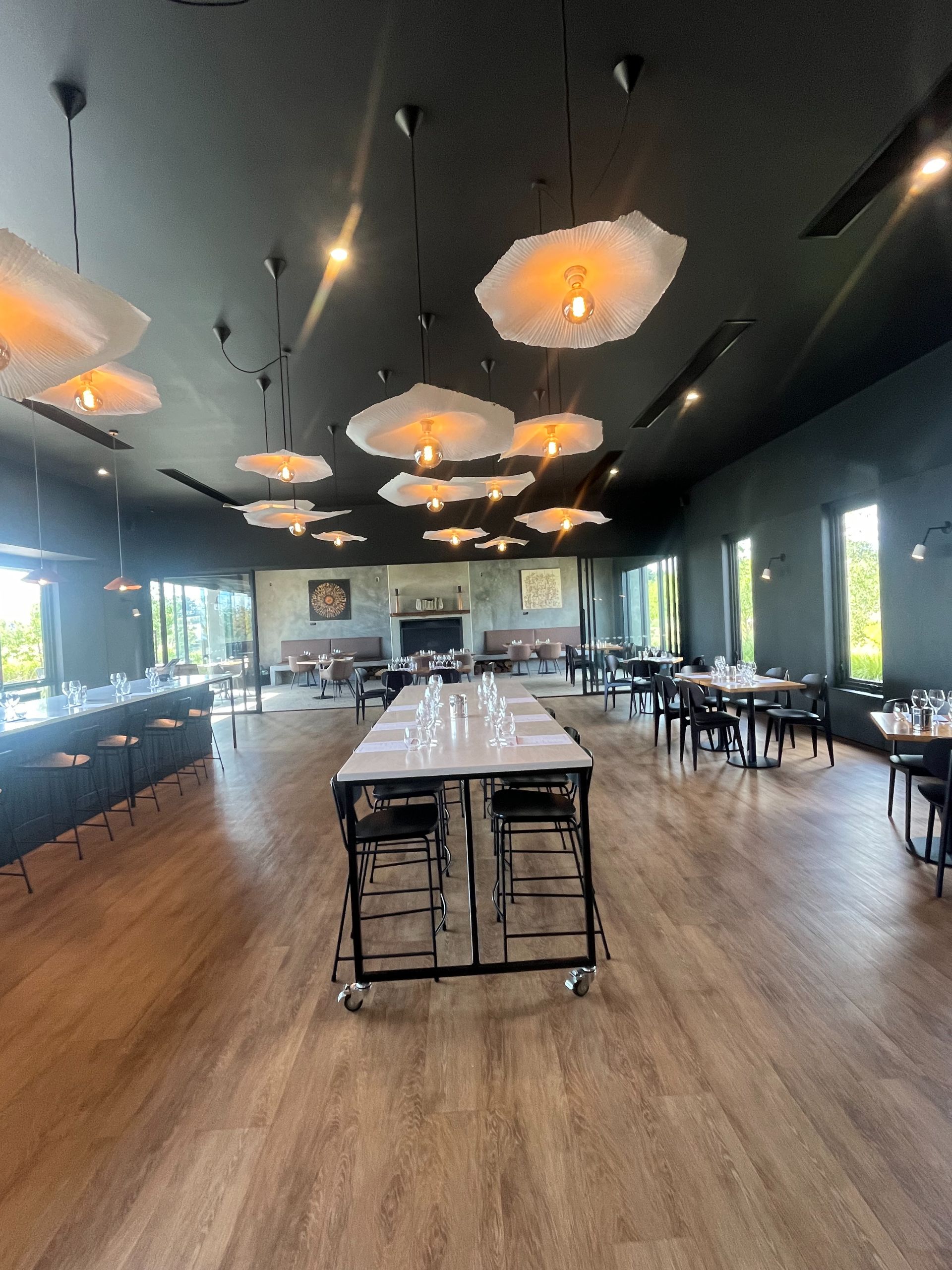 |
Now this is no ordinary producer – Printhie is one of the leading sparkling wine makers in Australia – Printhie’s Swift 2011 Blanc de Blancs was crowned Best Australian Sparkling at the Champagne & Sparkling Wine World Championships in London 2022 and their range of sparklings lead the way in Australia, with the coup d’etat of being inducted into Australia’s Champagne Expert, Tyson Stelzer’s Sparkling Hall of Fame in 2016 as the best sparkling wine brand in NSW.
This is also no ordinary cellar door – Printhie is up there with the best in the world in terms of architectural design and pure wow-factor. There’s a cellar door, a casual wine bar offering light snacks, seating outside with views over the vines and one of the best fine dining restaurants in Orange. Along with tastings, visitors can order picnic baskets, adventure-seekers can try their hand at fly fishing, wine aficionados can book masterclasses with the winemaker and those looking for something extra special can take a helicopter tour of the vineyard.
The restaurant – Printhie Dining - retained its ‘hat’ in 2025 for culinary excellence (accredited by the Australian Good Food Guide). With a nod to local produce, much of it coming from Printhie’s lush kitchen garden, the restaurant is a buzzy affair with degustation lunches and dinners, only occasionally silenced by a quiet reverence for the fine wines and stunning views of the Great Dividing Range.
So, no pressure working here!
Pouring wine at one of the leading cellar doors in one of the most exciting wine regions in Australia means that on any given day there could be a full house of thirsty wine lovers vying for your attention. Learning on my feet, and realising hospitality is a lot more physically and mentally challenging than I’d ever imagined, I was astounded how much I loved being at the pointy end of the bottle, rather than the pen. Manager Kylie, and seasoned host, Gen took me under their wine wings and helped me to navigate my way around the cellar door. Supreme professionals and passionate about all things Printhie and Orange, the team welcomed me in true Aussie style like a long lost family member. I had found my tribe.
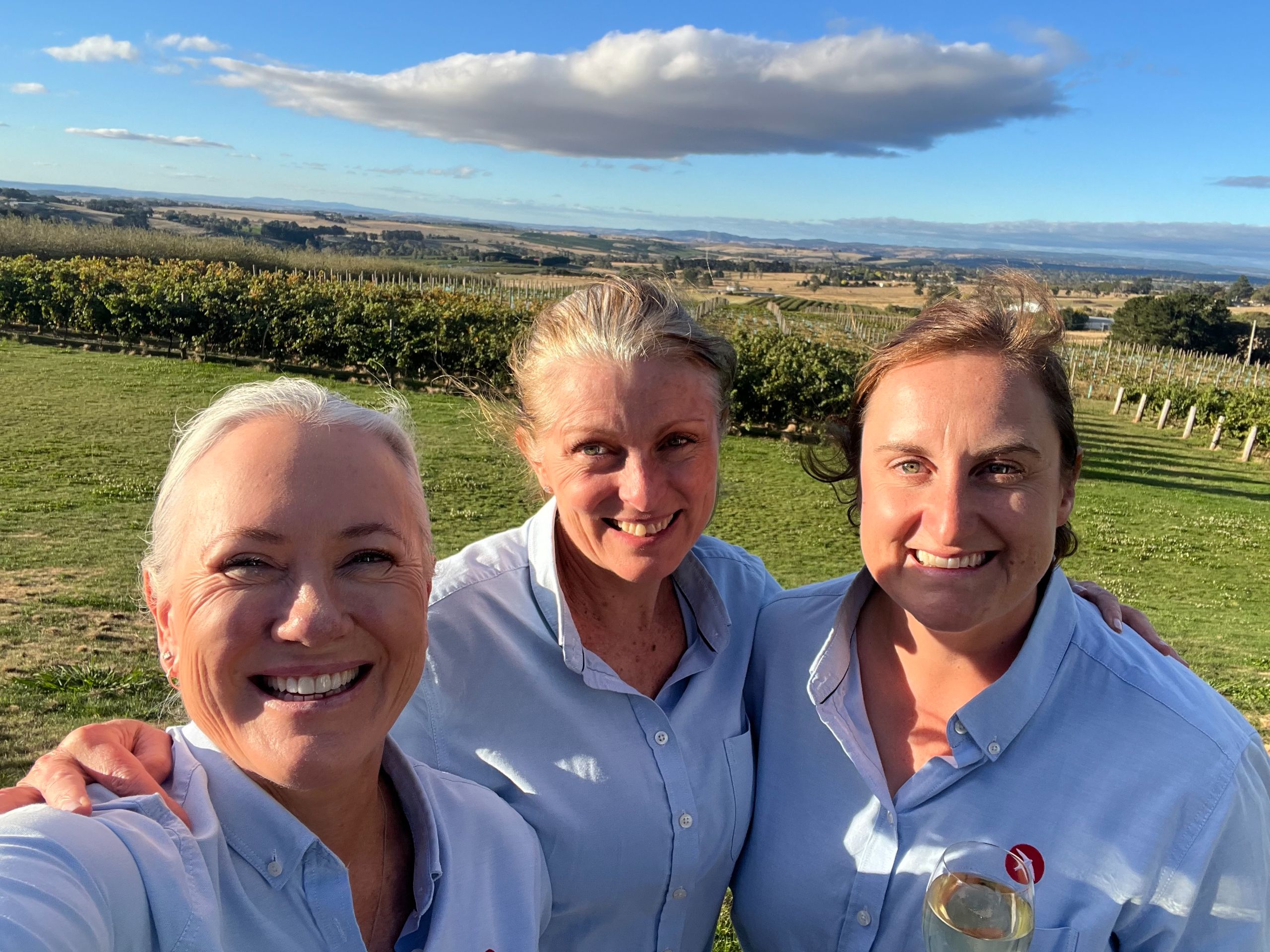
Aussie producers are known for offering a wide range of wines, and Printhie’s 80 or so acres of vines create six different labels of stills and sparklings, and yield more than 25 wine styles. Learning about each wine, memorising my tasting notes and adding a few anecdotes along the way got the grey cells going. But how I loved talking to the guests, inspiring them with the story about Printhie and my new second home in Orange. Perhaps being a newbie in Orange made me feel even more in love and proud of it…. It is my new obsession and I want to tell everyone about this magical wine region called Orange that doesn’t make orange wine.
Working in a cellar door is not for everyone, it’s fast paced and not all glamour – most of the time you’re washing glasses, cleaning, dusting and re-stocking bottles. But in between this comes those special moments of facing a guest, pouring wine and showering them with love about the bottles, the producer and the region, and seeing their faces glow, hopefully from my passionate, enthusiastic narrative, rather than too much wine.
Australia has been making and drinking wine for over two centuries, so cellar door guests here are a mix of wine experts, wine enthusiasts and happy wine drinkers – having an audience who are well versed in the language of wine, who are eager to hear and learn more is pure joy. And with the added bonus of working with a panoramic view of rolling vines, pouring some of the best wines in one of the most sophisticated cellar doors in the country - I had found my happy place.
For now, Orange harvest 2025 is a wrap (and by the looks of it, it’s going to be a good vintage). I can’t wait to put on my Printhie shirt and do it all again next year.
Discover Printhie here
For information on Orange visit Orange360





